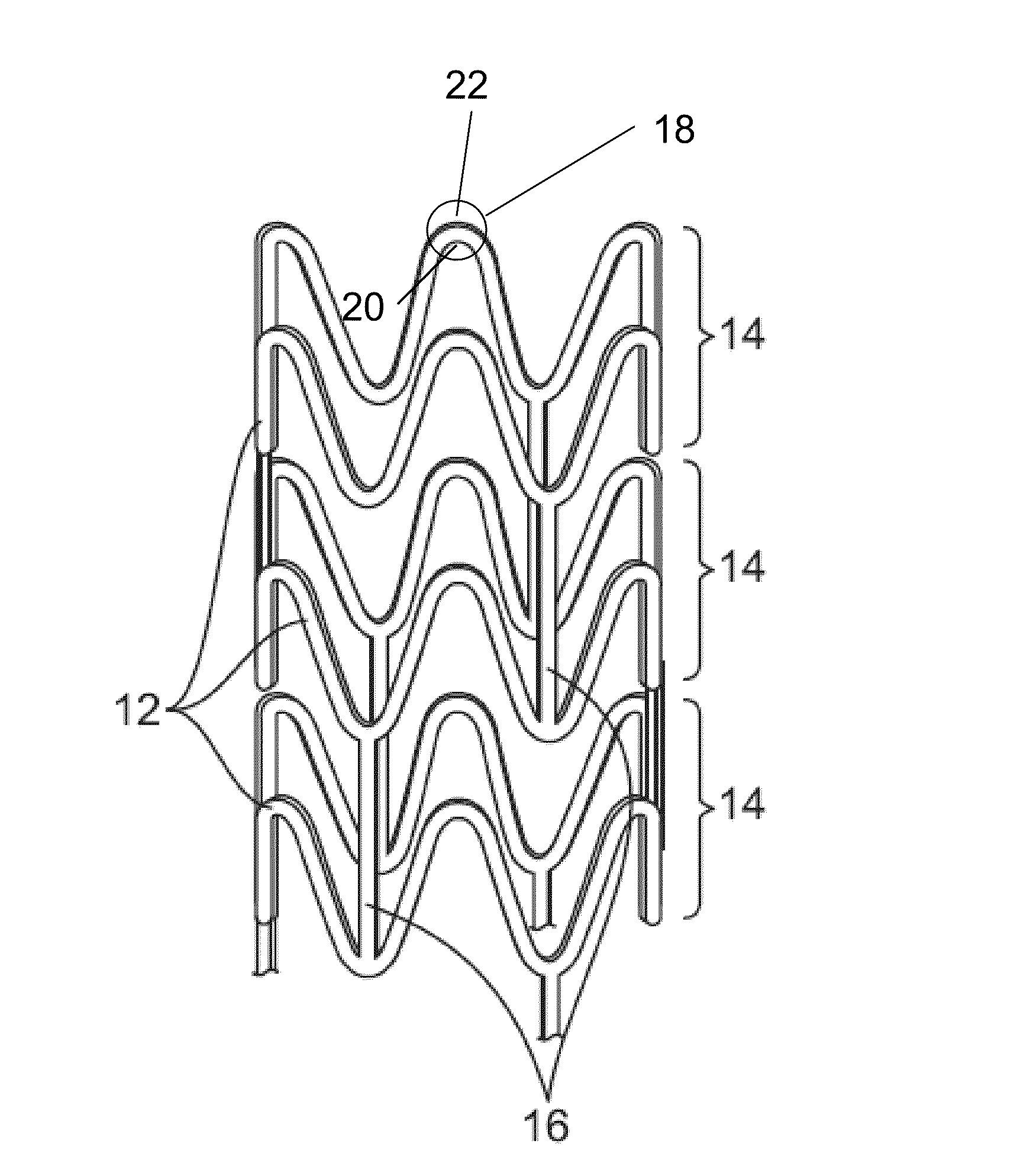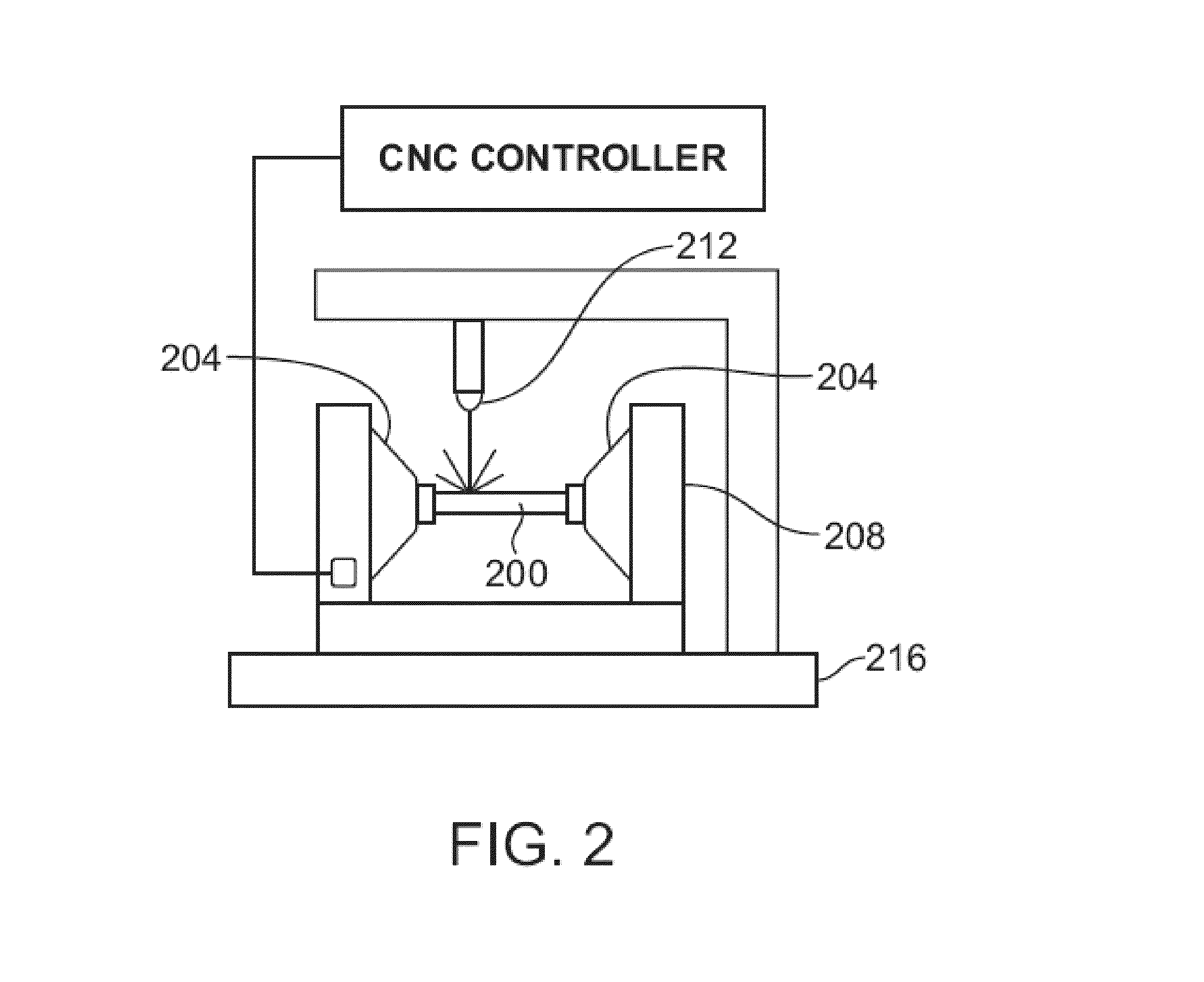Laser system and processing conditions for manufacturing bioabsorbable stents
a bioabsorbable stent and laser system technology, applied in the direction of manufacturing tools, prostheses, blood vessels, etc., can solve the problems of adverse effects of properties on the proper functioning of the device being manufactured
- Summary
- Abstract
- Description
- Claims
- Application Information
AI Technical Summary
Benefits of technology
Problems solved by technology
Method used
Image
Examples
examples
[0073]The examples and experimental data set forth below are for illustrative purposes only and are in no way meant to limit the invention. The following examples are given to aid in understanding the invention, but it is to be understood that the invention is not limited to the particular materials or procedures of examples.
[0074]The following set of examples describes results of laser machining stents from PLLA tubing for seven different parameter combinations of pulse width and wavelength. The PLLA tubing was formed from an extrusion process from 100% PLLA resin. The dimensions of the tubing, the extruded dimensions, are: outside diameter (OD)=0.0066 inch and inside diameter (ID)=0.0025 inch. The extruded PLLA tubes were radially expanded according to a process described previously, for example, in U.S. application Ser. No. 12 / 554,589, which is incorporated by reference herein. The target percent radial expansion (% RE) was 400%, where % RE is deformed as 100%×(Inside Diameter of...
PUM
| Property | Measurement | Unit |
|---|---|---|
| wavelength | aaaaa | aaaaa |
| thickness | aaaaa | aaaaa |
| thickness | aaaaa | aaaaa |
Abstract
Description
Claims
Application Information
 Login to View More
Login to View More - R&D
- Intellectual Property
- Life Sciences
- Materials
- Tech Scout
- Unparalleled Data Quality
- Higher Quality Content
- 60% Fewer Hallucinations
Browse by: Latest US Patents, China's latest patents, Technical Efficacy Thesaurus, Application Domain, Technology Topic, Popular Technical Reports.
© 2025 PatSnap. All rights reserved.Legal|Privacy policy|Modern Slavery Act Transparency Statement|Sitemap|About US| Contact US: help@patsnap.com



